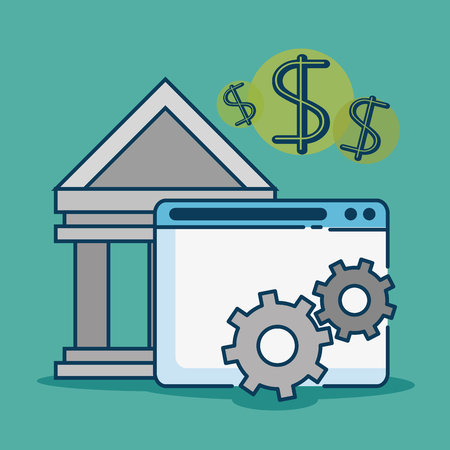Introduction to Interest Rates and Their Importance
Interest rates are a fundamental concept in finance, and they play a pivotal role in shaping the entire U.S. economy. At their core, interest rates represent the cost of borrowing money or the return for lending it. In the United States, these rates are heavily influenced by the Federal Reserve (often called the Fed), which acts as the nation’s central bank. By adjusting benchmark rates, such as the federal funds rate, the Fed can either stimulate economic activity by making borrowing cheaper or cool down inflation by making borrowing more expensive. This delicate balancing act is crucial because interest rates not only impact consumer loans like mortgages and credit cards but also directly affect how companies are valued and how their stock prices move. Understanding who sets these rates and why they matter provides a solid foundation for exploring how shifts in interest rates ripple through financial markets, influencing company valuations and ultimately shaping your investment decisions.
2. The Link Between Interest Rates and Company Valuations
Interest rates play a pivotal role in how investors and analysts determine what a company is worth. When interest rates change, the underlying math used to value companies—especially through discounted cash flow (DCF) models—shifts as well. Let’s break this down step by step so you can see how these moving parts fit together in the real world of U.S. investing.
Discounted Cash Flow (DCF): The Basics
The DCF method is widely used to estimate the present value of a company based on its expected future cash flows. Here’s where interest rates come in: those future cash flows are “discounted” back to today using a discount rate, which often includes the prevailing interest rate. When interest rates go up, so does the discount rate—which means future cash flows are worth less in today’s dollars, lowering a company’s valuation. Conversely, when interest rates fall, future earnings become more valuable now, pushing valuations higher.
| Interest Rate Trend | Discount Rate Effect | Impact on Company Valuation |
|---|---|---|
| Rising Rates | Higher Discount Rate | Lower Present Value (Valuation Drops) |
| Falling Rates | Lower Discount Rate | Higher Present Value (Valuation Rises) |
Other Key Valuation Methods Affected by Interest Rates
While DCF is central, other valuation models also respond to changes in interest rates:
- Dividend Discount Model (DDM): Similar to DCF but focuses on future dividends instead of all cash flows. Higher rates reduce the present value of expected dividends.
- Earnings Multiples (P/E Ratios): Analysts often compare company earnings to benchmark interest rates like U.S. Treasury yields. Higher rates can make stocks look less attractive relative to safer bonds, reducing price-to-earnings multiples.
- Asset-Based Valuations: The cost of borrowing money rises with higher interest rates, making it more expensive for companies to expand or refinance debt—affecting their overall asset values.
A Practical Takeaway for U.S. Investors
If you’re tracking stocks or considering investments, keep an eye on Federal Reserve decisions and broader interest rate trends. Even small shifts can have ripple effects on how Wall Street values entire sectors, especially those sensitive to borrowing costs like tech or real estate. Understanding this link arms you with a key insight for smarter investing decisions.

3. Impact on Stock Prices: The Investor Perspective
Interest rates play a critical role in shaping investor behavior and, ultimately, stock prices. When interest rates rise, borrowing becomes more expensive for both individuals and businesses. As a result, investors may become more cautious, shifting their portfolios away from stocks and into safer assets like bonds or savings accounts that now offer higher returns. This reduction in demand for equities can drive stock prices downward.
Conversely, when interest rates fall, the appeal of fixed-income investments decreases. Investors seeking better returns are often drawn back to the stock market, pushing demand—and thus stock prices—higher. Lower rates can also make it cheaper for companies to borrow and expand, which can translate into stronger earnings growth and further fuel positive investor sentiment.
The effect of changing rates doesn’t stop at simple asset allocation. Investor risk tolerance shifts alongside rate changes. In a low-rate environment, investors may be more willing to take risks on growth stocks or emerging sectors because the opportunity cost of not earning higher yields elsewhere is minimal. In contrast, during periods of rising rates, risk aversion tends to increase as the safety and predictability of fixed-income products become more attractive.
Ultimately, changes in interest rates send a ripple effect through the market: they influence what types of investments are most attractive and shape overall market sentiment. Understanding this dynamic is essential for anyone looking to navigate the ups and downs of the stock market with confidence.
4. Sector-Specific Effects to Watch
When it comes to how interest rates impact company valuations and stock prices, not all sectors are affected equally. The unique business models and financial structures of different industries mean some will feel the effects of rate changes more than others. Understanding these sector-specific dynamics can help investors make smarter portfolio choices as economic conditions shift.
How Key Industries Respond to Rate Changes
| Industry | Impact of Rising Rates | Impact of Falling Rates |
|---|---|---|
| Technology | Growth-oriented tech companies, especially those with little current profit but high future expectations, often see valuations drop as higher rates increase discount rates used in DCF models, making future profits less valuable today. | Lower rates benefit tech stocks by making future growth more attractive, supporting higher valuations and encouraging investor risk-taking. |
| Real Estate (REITs) | Real estate investment trusts (REITs) usually suffer as borrowing costs rise and property values stagnate or fall. Higher mortgage rates can also dampen demand for new homes and commercial spaces. | Falling rates lower financing costs for REITs and boost property demand, often leading to higher stock prices in this sector. |
| Banks & Financials | Banks may benefit initially from higher rates through increased net interest margins, but if rates rise too quickly or economic growth slows, loan demand may fall and defaults could rise. | Low rates squeeze banks’ profit margins on loans but can stimulate borrowing activity if the economy is strong. |
| Consumer Discretionary | Companies selling non-essential goods may struggle as consumers face higher borrowing costs on credit cards and auto loans, reducing discretionary spending. | Cheaper credit encourages consumers to spend more on discretionary items, helping these companies grow sales and earnings. |
| Utilities & Staples | Seen as defensive stocks, utilities and consumer staples might underperform when rates rise because their steady dividends become less attractive compared to safer bonds. | In low-rate environments, investors often turn to utilities and staples for reliable income, boosting their share prices. |
The Takeaway for Investors
No matter which way interest rates move, each sector reacts based on its specific vulnerabilities and strengths. By recognizing these patterns—such as tech’s sensitivity to rising rates or banks’ reliance on loan activity—investors can adjust their allocations proactively. It’s wise to keep an eye on Federal Reserve policy announcements and consider rebalancing your portfolio if you’re heavily weighted in sectors that are especially rate-sensitive. Smart diversification across industries can provide a buffer against sudden market moves triggered by shifts in interest rates.
5. Staying Proactive: What Investors Can Do
Interest rate changes can feel unsettling, but there are practical steps you can take to navigate these shifts with confidence. The key is to stay proactive and keep your eyes on the long-term horizon rather than reacting emotionally to short-term market moves. Here are some share-friendly strategies and tips to help you manage your portfolio when interest rates are on the move:
Review and Diversify Your Portfolio
Diversification remains one of the most powerful tools in an investor’s toolkit. By spreading investments across different sectors, asset classes, and even geographies, you reduce the risk that any single rate-sensitive area will have an outsized impact on your overall wealth. In times of changing rates, check that your portfolio isn’t too heavily weighted toward companies or industries that are particularly sensitive to interest rate fluctuations, such as utilities or real estate.
Focus on Quality and Fundamentals
During periods of rising rates, companies with strong balance sheets, consistent cash flow, and manageable debt levels tend to weather storms better. Reevaluate your holdings and prioritize quality businesses that have proven their resilience over time. Remember, higher interest rates can increase borrowing costs for companies, so those with less reliance on debt may be better positioned for stability.
Maintain a Long-Term Perspective
Market volatility often increases during rate hikes or cuts, tempting investors to make impulsive decisions. However, history shows that markets recover and reward patience. Consider your financial goals—whether it’s retirement or building generational wealth—and avoid making knee-jerk reactions based on headlines or short-term dips.
Rebalance Regularly
Interest rate changes can cause certain parts of your portfolio to grow faster than others, skewing your original allocation. Set a schedule (for example, annually or semi-annually) to rebalance back to your target mix. This disciplined approach helps you buy low and sell high, all while keeping your risk level in check.
Stay Informed but Don’t Obsess
It’s important to stay updated on Federal Reserve announcements and economic indicators, but don’t let daily news drive anxiety. Instead, focus on understanding how broad trends could impact your investments over years—not just weeks or months.
Navigating interest rate environments doesn’t require a crystal ball—it’s about having a plan and sticking to it. By focusing on diversification, fundamentals, regular rebalancing, and maintaining perspective, you set yourself up for long-term growth and greater peace of mind through whatever market cycles come your way.
6. Conclusion: The Big Picture
Understanding how interest rates impact company valuations and stock prices is crucial for anyone navigating the U.S. financial markets. As weve discussed, interest rate changes can influence everything from consumer spending and corporate profits to investor sentiment and the cost of borrowing. When rates rise, company valuations may decline and stock prices can come under pressure; when rates fall, the opposite often occurs, with equities tending to benefit.
The key takeaway here is that interest rates are a foundational element in financial decision-making. By staying informed about Federal Reserve policy and broader economic trends, you put yourself in a better position to anticipate market movements and make smarter investment choices. Remember, while you cant control interest rate changes, you can control how prepared you are to respond.
Ultimately, adaptability is your best asset in an ever-changing financial landscape. Keep learning, keep monitoring market signals, and always consider how shifts in interest rates could affect your portfolio or business decisions. With a clear understanding of these dynamics, youll be well-equipped to navigate both the opportunities and challenges that come with changes in U.S. interest rates.

